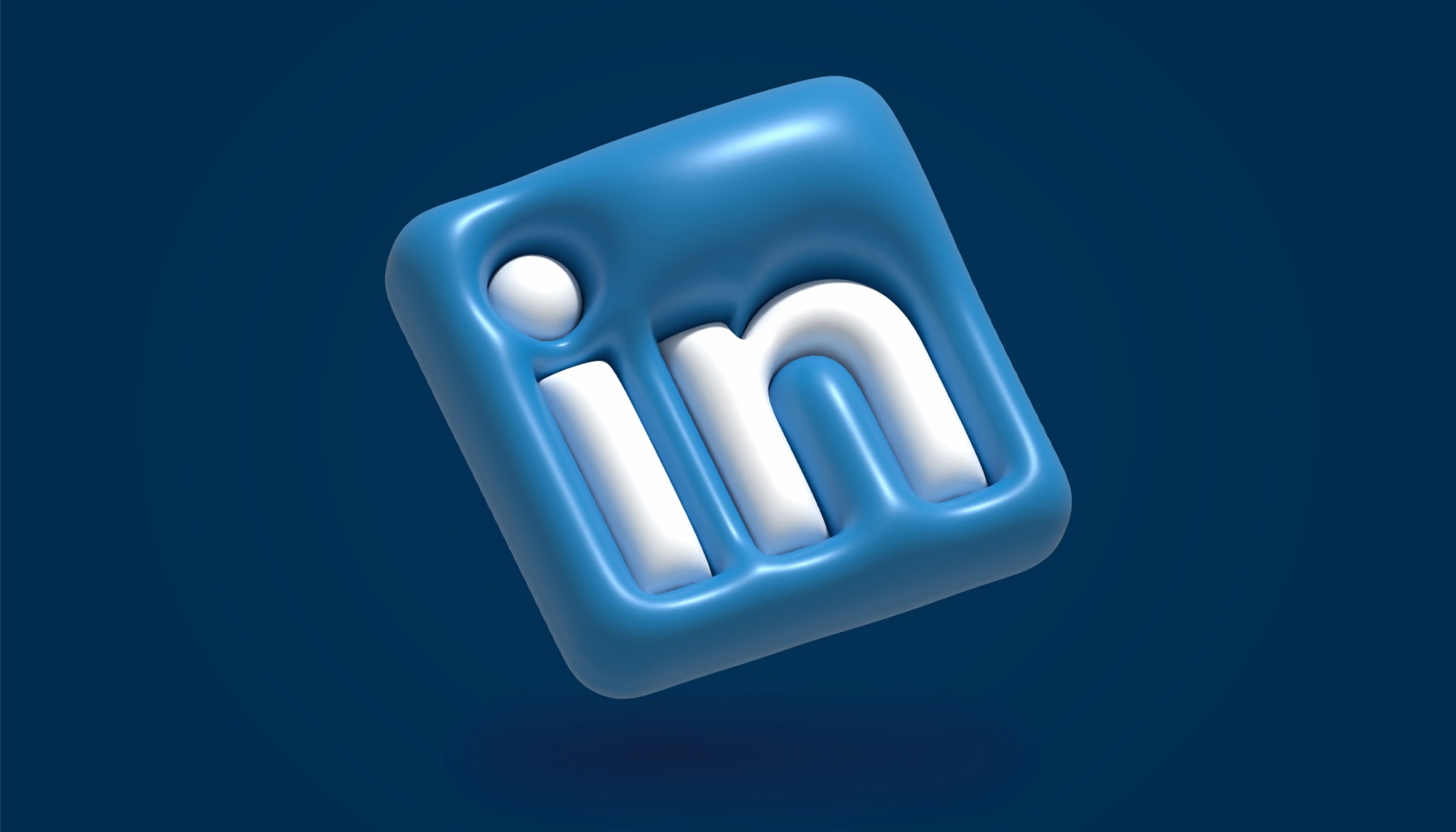
In the ever-evolving world of digital marketing and lead generation, LinkedIn has emerged as a powerhouse platform for B2B connections. As businesses strive to maximize their presence on this professional network, the demand for efficient automation tools has skyrocketed. Two prominent players in this arena are Salesflow and Skylead, each offering unique features to streamline LinkedIn outreach and engagement.
As a seasoned SEO marketing specialist who has personally tested both tools, I can attest to the transformative impact they can have on a company’s LinkedIn strategy. However, choosing between them requires a nuanced understanding of their strengths and limitations. In this article, we’ll dive deep into a comparison of Salesflow and Skylead, exploring their key features, user experiences, and overall effectiveness in driving LinkedIn success.

Key Facts
- Salesflow focuses primarily on LinkedIn automation, while Skylead offers multichannel outreach capabilities.
- Both tools provide customizable campaign parameters and integration with CRM systems.
- Skylead offers more advanced automation features, including dynamic sequences and if/else branching.
Unraveling the Automation Titans: Salesflow vs Skylead
When it comes to LinkedIn automation, the choice between Salesflow and Skylead can significantly impact your lead generation strategy. These two powerful tools have emerged as leaders in the field, each offering unique features and capabilities designed to streamline your LinkedIn outreach efforts.
Salesflow, known for its user-friendly interface and affordability, caters primarily to small businesses and startups. In contrast, Skylead positions itself as a more comprehensive solution, offering advanced automation features and multichannel support. As we delve deeper into their functionalities, we’ll explore how these tools differ in their approach to LinkedIn automation, their target audiences, and the specific benefits they offer to users. Understanding these nuances is crucial for making an informed decision that aligns with your business goals and resources.
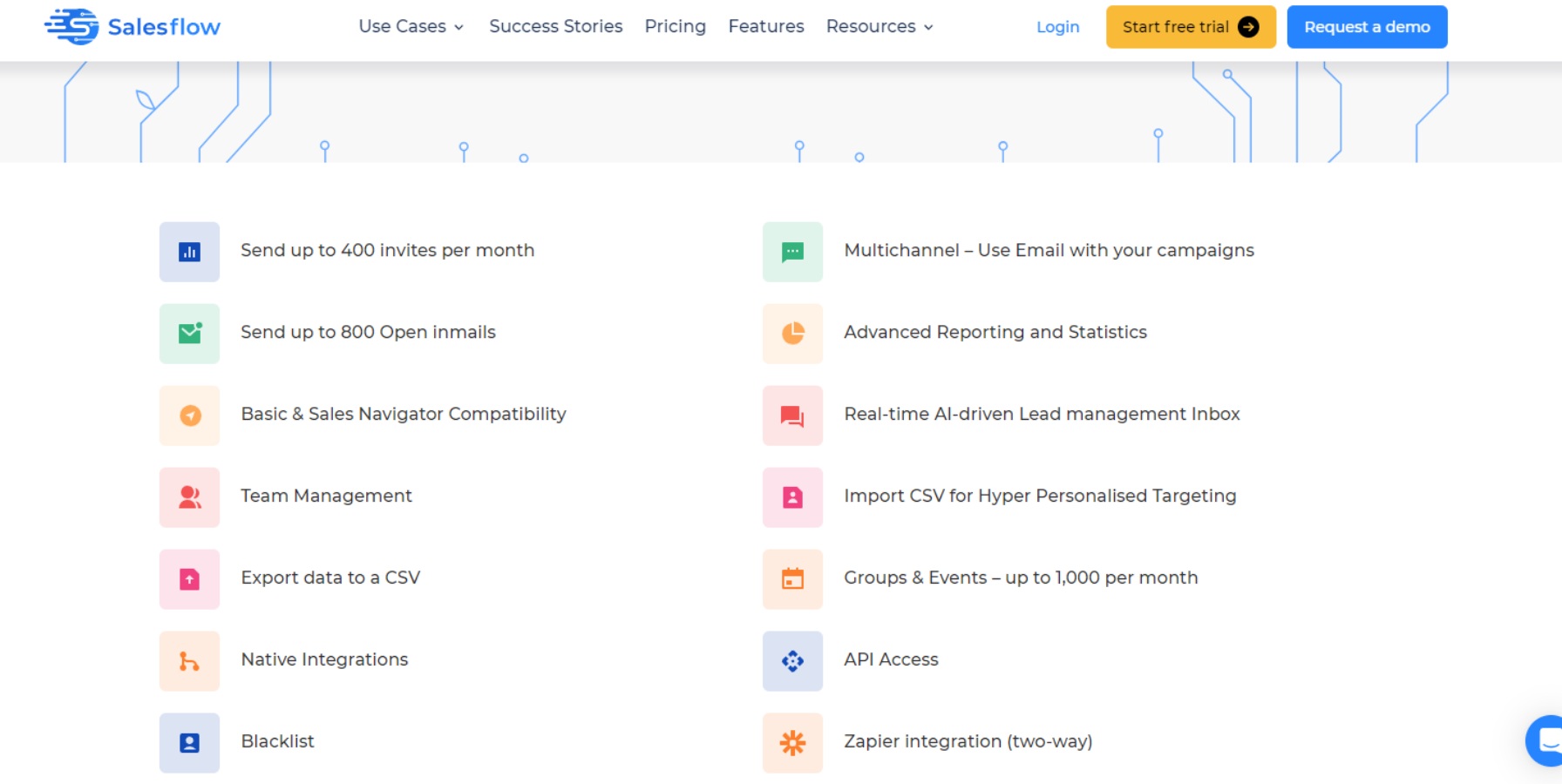
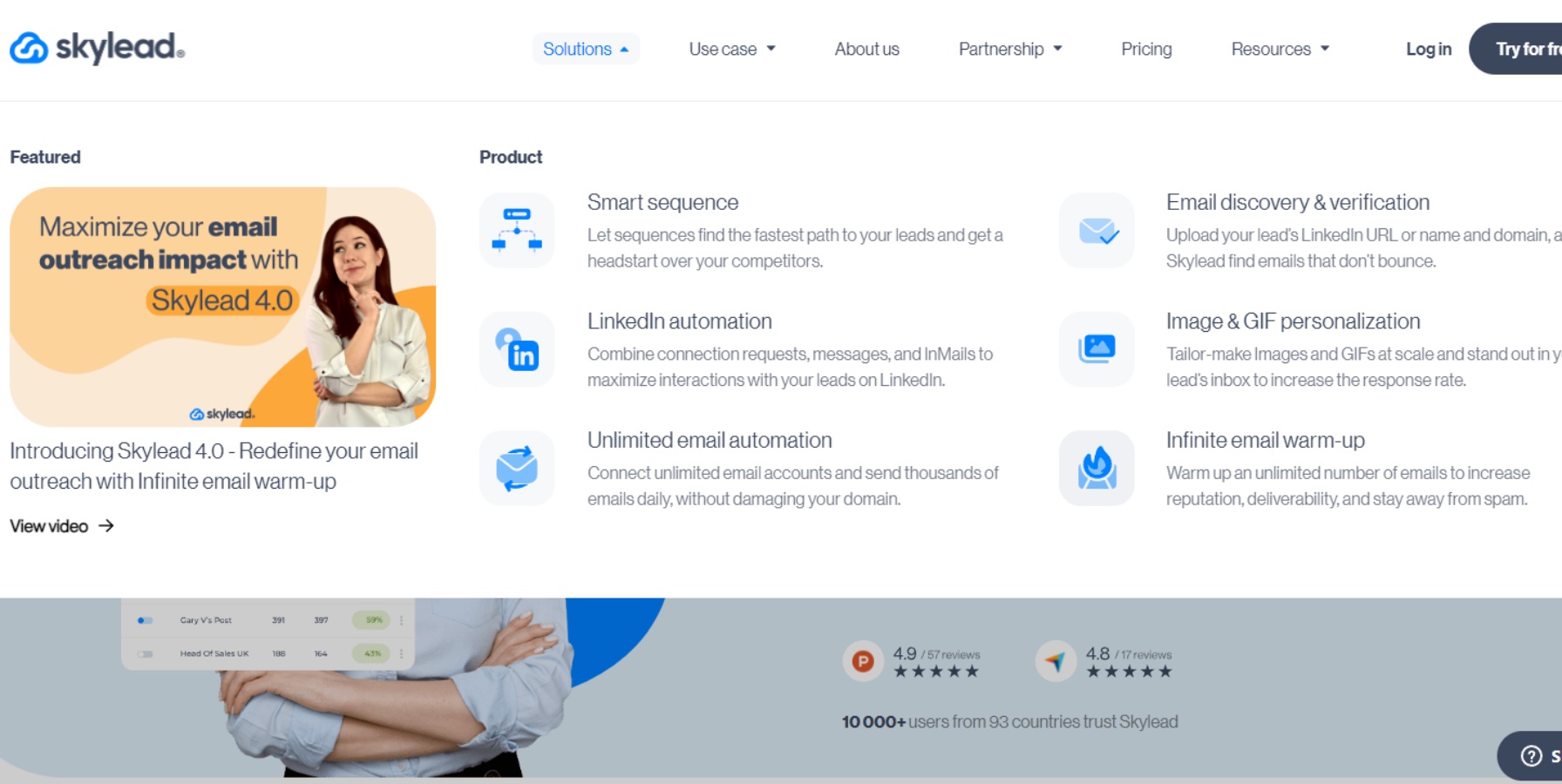
1. Purpose and Target Audience
Salesflow is tailored for sales teams, agencies, and startups looking to automate their LinkedIn lead generation. Its user base primarily consists of small businesses, recruiters, and marketing teams. The platform’s focus on simplicity and affordability makes it an attractive option for organizations just beginning to explore LinkedIn automation.
Salesflow’s features are designed to streamline top-of-funnel activities, making it particularly useful for businesses looking to expand their reach on LinkedIn efficiently. On the other hand, Skylead casts a wider net, focusing on multichannel outreach that includes both LinkedIn and email. It’s particularly suited for B2B professionals, recruiters, and sales teams who need to automate outreach across multiple platforms. Skylead’s more comprehensive approach appeals to businesses looking for a unified solution to manage their outreach efforts across different channels, offering a more integrated approach to lead generation and nurturing.
2. Ease of Use and Interface
In my experience, Salesflow boasts an intuitive interface that many users find easy to navigate. The platform’s design prioritizes user-friendliness, making it accessible even for those new to LinkedIn automation tools. This ease of use is particularly beneficial for small businesses and startups that may not have dedicated resources for managing complex marketing tools. However, some users, myself included, have noted that the campaign dashboard can be a bit challenging to master initially.
As one user commented on Capterra,
“The initial setup required some hand-holding, but once we got the hang of it, it was smooth sailing.”
This suggests that while Salesflow is generally user-friendly, there may be a learning curve for some of its more advanced features. Skylead, in contrast, has received praise for its user-friendly design. A Skylead user on Capterra remarked,
“The interface is clean and straightforward, making it easy for both beginners and seasoned professionals to set up campaigns quickly.”
This indicates that Skylead has successfully balanced functionality with accessibility, catering to users with varying levels of technical expertise.
3. Automation Capabilities
This is where the two tools diverge significantly. Salesflow excels in automating top-of-funnel activities, primarily focusing on LinkedIn outreach. It offers customizable campaign parameters and over 100 templates for outreach and personalization. These features allow users to create highly targeted campaigns with minimal manual input, streamlining the initial stages of lead generation. Salesflow’s automation capabilities are particularly beneficial for businesses looking to scale their LinkedIn outreach efforts without significantly increasing their time investment. The platform’s focus on LinkedIn-specific automation makes it a powerful tool for businesses that prioritize this platform in their lead generation strategy.
Skylead takes automation a step further with advanced features like dynamic sequences and if/else branching. This allows for more sophisticated, tailored follow-up actions. As a Skylead representative stated, “Our smart sequences can switch between fully automated and semi-automated messages based on recipient responses, providing a more personalized touch.” This level of automation intelligence enables users to create more nuanced, responsive campaigns that adapt to prospect interactions, potentially leading to higher engagement rates and more qualified leads.
4. Multichannel Support
While Salesflow primarily focuses on LinkedIn with some email integration features, Skylead offers robust multichannel support. This includes combining LinkedIn outreach with email automation, making it a more versatile tool for comprehensive lead generation strategies. Salesflow’s approach is ideal for businesses that want to concentrate their efforts on LinkedIn, leveraging the platform’s professional network for targeted outreach. The limited email integration allows for some cross-platform communication, but the focus remains firmly on LinkedIn.
Skylead, on the other hand, provides a more holistic approach to outreach. By integrating LinkedIn and email automation, it allows users to create cohesive campaigns that span multiple touchpoints. This multichannel capability is particularly valuable for businesses with a more diverse outreach strategy, enabling them to maintain consistent messaging and follow-up across different platforms. The ability to seamlessly transition between LinkedIn and email outreach can lead to more comprehensive lead nurturing and potentially higher conversion rates.
5. Pricing and Value
Salesflow is generally considered more affordable, especially for small businesses and startups. Many users find it provides good value for money, particularly when compared to similar tools in the market. The platform’s pricing structure is designed to be accessible, making it an attractive option for businesses just starting with LinkedIn automation or those with limited budgets. The affordability of Salesflow doesn’t come at the expense of functionality, as it still offers a robust set of features that can significantly enhance LinkedIn outreach efforts. This balance of cost and capability makes Salesflow a popular choice among small to medium-sized businesses looking to maximize their ROI on marketing tools.
Skylead, while slightly more expensive, justifies its higher price point with more advanced automation features and multichannel capabilities. As one user put it,
“The extra cost is worth it for the additional flexibility and sophistication in campaign management.”
This sentiment reflects the value proposition of Skylead – while it may require a larger investment, the advanced features and multichannel support can potentially lead to more comprehensive and effective outreach campaigns, especially for businesses with more complex lead generation needs.
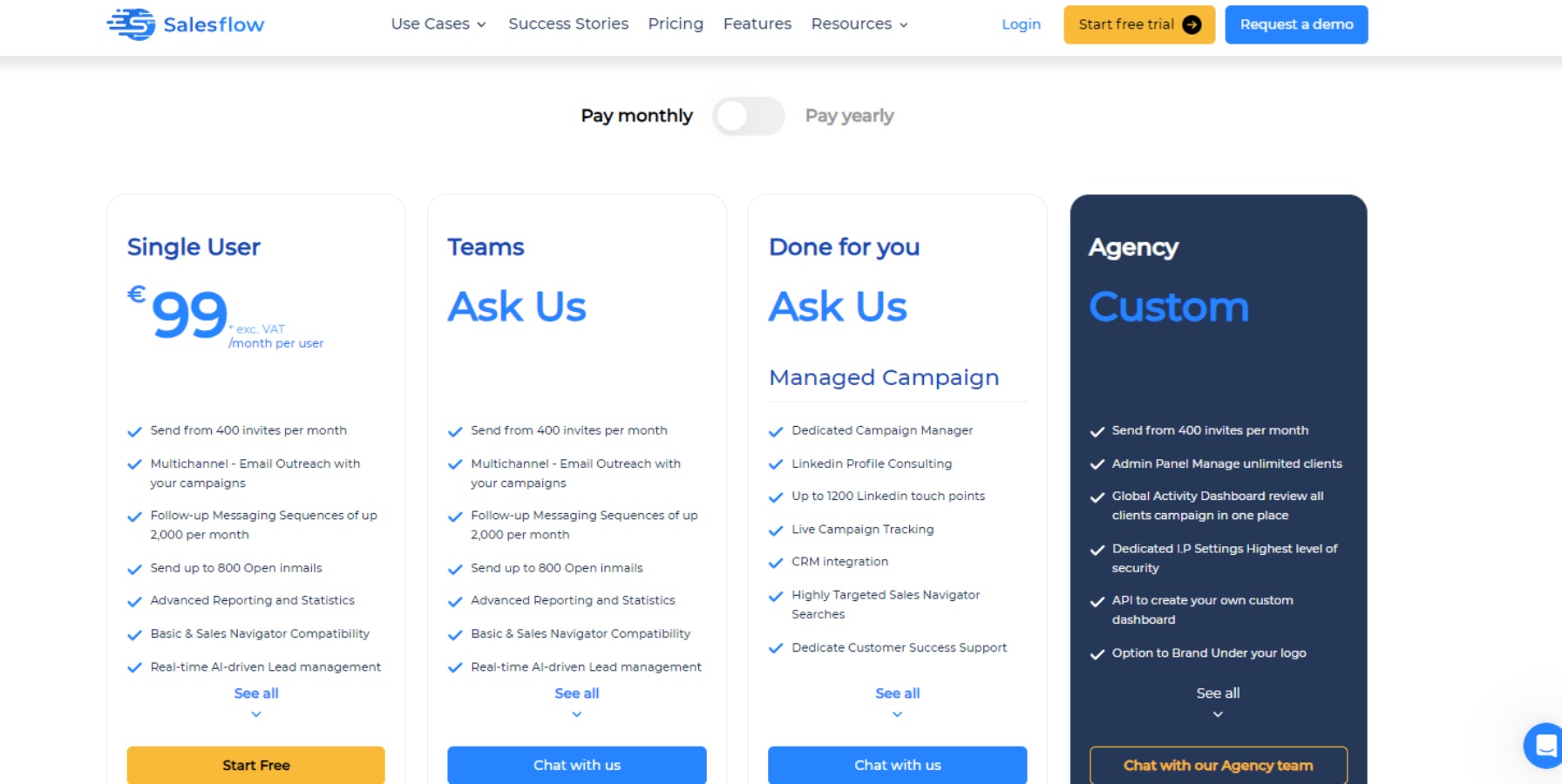
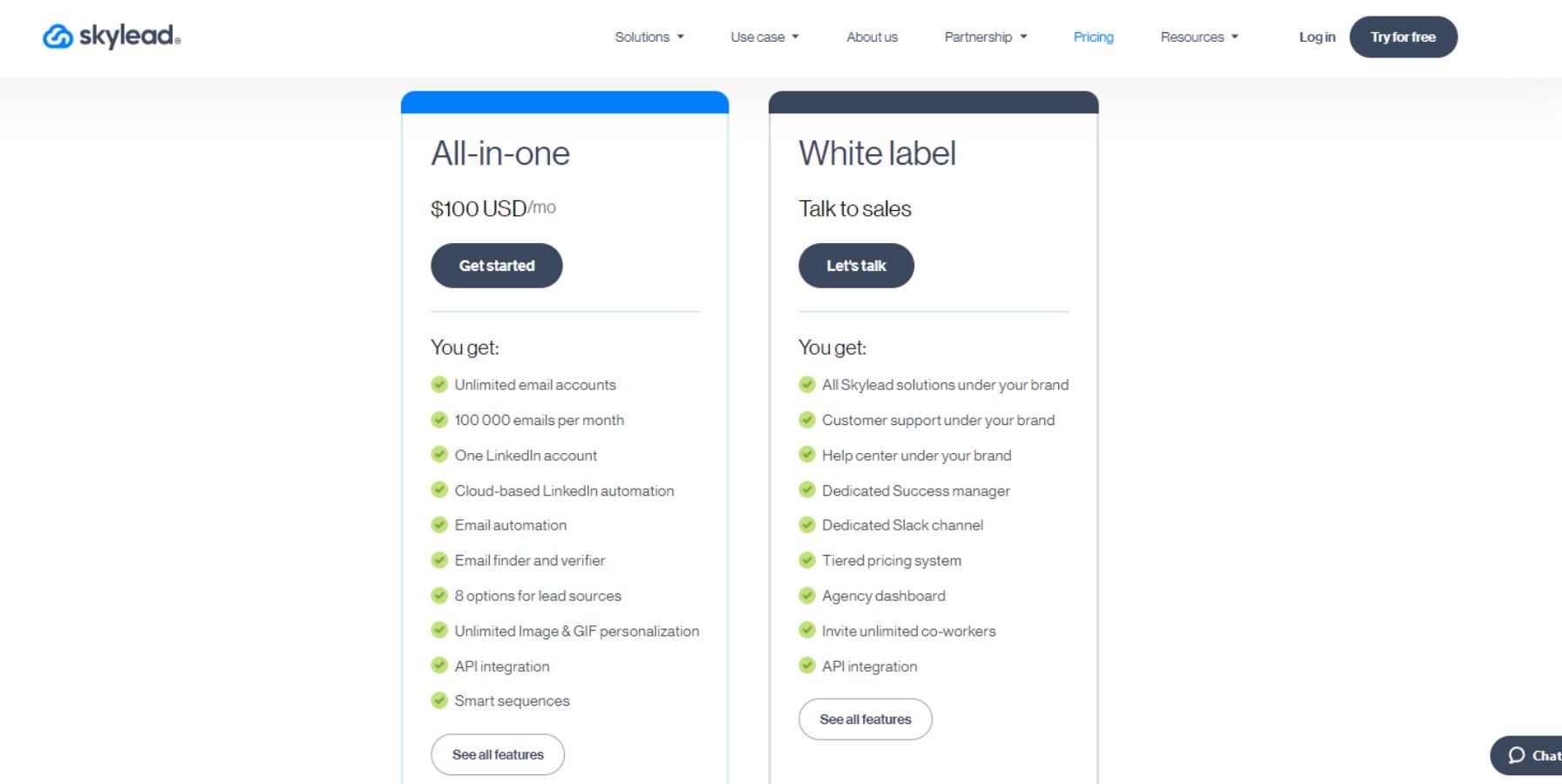
6. Analytics and Reporting
Both tools offer real-time analytics on campaign performance, providing users with valuable insights into the effectiveness of their outreach efforts. These analytics capabilities are crucial for optimizing campaigns and demonstrating ROI to stakeholders. Salesflow’s analytics suite includes metrics on connection requests, message responses, and overall engagement rates. This data helps users understand the performance of their LinkedIn outreach campaigns and make data-driven decisions to improve their strategies.
However, some Salesflow users have reported finding the reports confusing, suggesting that there might be room for improvement in terms of data presentation and user-friendliness. Skylead seems to have an edge here, offering more detailed analytics, especially for multichannel campaigns. The platform’s reporting capabilities extend beyond LinkedIn metrics to include email performance data, providing a more comprehensive view of the entire outreach funnel. This broader analytical scope can be particularly beneficial for businesses running integrated campaigns across multiple channels, as it allows for a more holistic understanding of campaign performance and lead journey across different touchpoints.
7. Integration Capabilities
Both Salesflow and Skylead integrate well with popular CRM tools, recognizing the importance of seamless data flow between lead generation activities and broader sales and marketing processes. Salesflow uses Zapier for integration with platforms like HubSpot and Salesforce, leveraging this popular integration tool to connect with a wide range of CRM and marketing automation platforms. This approach allows Salesflow users to easily sync their LinkedIn outreach data with their existing tech stack, ensuring that lead information is consistently updated across all systems. The Zapier integration also opens up possibilities for creating custom workflows and automations that extend beyond Salesflow’s native capabilities.
Skylead offers similar integration capabilities to streamline the lead management process. While specific details about Skylead’s integration methods weren’t provided, the platform’s focus on multichannel outreach suggests that its integration capabilities might be more directly built into the tool, potentially offering a more seamless experience for users who require tight integration between their outreach activities and CRM systems. Both tools’ emphasis on integration reflects the growing importance of connected martech ecosystems in modern lead generation and sales processes.
Horlio as an Innovative Alternative
While Salesflow and Skylead offer robust solutions for LinkedIn automation, Horlio emerges as an innovative alternative that addresses some of the limitations of its competitors. As a cutting-edge SaaS platform, Horlio leverages advanced AI and automation technologies to revolutionize LinkedIn engagement and networking.
Key features that set Horlio apart include:
- AI-powered content generation that adapts to different tones and styles
- Intelligent LinkedIn automation that mimics human behavior
- Advanced targeting capabilities for precise audience engagement
- Comprehensive campaign management with real-time analytics
- Customizable AI training to align with specific brand voices
Horlio’s approach to LinkedIn automation goes beyond simple outreach, focusing on building meaningful connections and driving business growth through strategic, personalized interactions. This holistic approach to LinkedIn engagement positions Horlio as a compelling alternative for businesses looking to maximize their presence on the platform.
Ready to Dominate LinkedIn?
Transform Contacts into Conversations with Smart Targeting on LinkedIn!
Conclusion
In the battle of Salesflow vs Skylead, there’s no clear-cut winner as both tools cater to different needs and preferences. Salesflow shines in its simplicity and affordability, making it an excellent choice for small businesses and startups looking to dip their toes into LinkedIn automation. Skylead, with its advanced features and multichannel capabilities, is better suited for businesses ready to invest in a more comprehensive outreach strategy.
However, for those seeking a more innovative and AI-driven approach to LinkedIn engagement, Horlio presents an intriguing alternative. Its focus on personalized interactions and advanced AI capabilities offers a fresh perspective on LinkedIn automation that may be worth exploring.
Ultimately, the choice between these tools will depend on your specific business needs, budget, and the level of sophistication you require in your LinkedIn outreach strategy. As with any marketing tool, it’s crucial to align your choice with your overall business goals and to continuously evaluate its performance in driving meaningful connections and leads.
Citations
- Koneksi. (2024). Skylead vs Salesflow. Koneksi. Retrieved October 9, 2024, from https://mykoneksi.com (Koneksi).
- Salesflow.io. (2024). Salesflow Case Study: Linkedin Automation Tool. Salesflow.io. Retrieved October 9, 2024, from https://salesflow.io (Salesflow – LinkedIn Automation Platform).
- Capterra. (2024). Salesflow Reviews. Capterra. Retrieved October 9, 2024, from https://www.capterra.com (Capterra).

